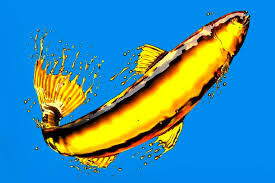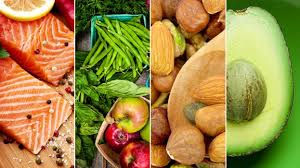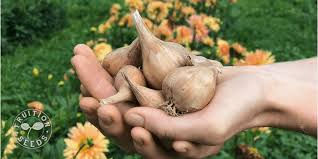What are the healthiest oils or fats to use when cooking or baking?
- Ginny Pomeroy MAPT, NTP, BCHN
- Feb 15, 2019
- 5 min read


Many recipes call for the use of some oil or fat. For one thing, fat makes everything taste good! Fat helps to lubricate a dish or baked good and keeps food from sticking to the pan. Our bodies utilize fatty acids that come from the digestion of fats in our diet to do many important things such as build healthy cell membranes, create hormones, build our nervous system (think brain!), and create cellular energy to name a few.

Fat in the diet has been vilified over the past 40 years because it is believed to contribute to heart disease and obesity. While there are definitely health risks associated with some types of fats, eliminating fat from the diet is analogous to throwing out the baby with the bath water!

Unfortunately, the “low fat diet” craze has backfired and instead has contributed to a rise in obesity and problems related to blood sugar regulation.
So, if we are allowed to eat fat, indeed, if we are supposed to eat fat, what types should we eat?? There are, after all, many options to choose from!

Part of the challenge for individuals is to understand the differences between various types of fats and oils when choosing the healthiest option. This requires someone to have a little understanding of the chemical structure of fatty acids. Basically, fats come in 2 varieties: saturated and unsaturated fatty acids.
This refers to how many hydrogen atoms are attached to the carbon molecule that is the chemical backbone of a fatty acid.

Unsaturated fatty acids are missing one or more hydrogen atoms as compared with a saturated FA, which contains a full complement of hydrogen atoms in its structure. In the simplest terms, saturated FAs are “straight” molecules and present as solid fats at room temperature. Unsaturated FAs have bends in their chemical structure and present as oils at room temperature. Chemically speaking, unsaturated fatty acids are “unstable” and can be easily damaged with exposure to heat, light, and oxygen. The degree of unsaturation (ie: the number of missing hydrogen atoms) will determine how many bends in its structure and just how unstable that molecule is. For example, Olive oil is a “mono-unsaturated fatty acid” which means it has 1 hydrogen missing and only one bend in its chemical structure and can hold up to moderated amounts of heat before becoming “damaged”.

On the other hand, fish oil, for example, is “polyunsaturated” which means that it has more than one missing hydrogen atom and more than one bend in its structure. All polyunsaturated oils can become damaged very easily with exposure to heat and light. I do not recommend cooking with any poly-unsaturated oils such as vegetable oil, canola oil, fish oil, and other delicate seed oils.
Question#1: Why should we care about whether the fatty acids that we consume are bent, straight, damaged or in their natural state?

For one thing, the fats that we consume actually become part of our cell membranes and hence become part of our physical bodies. Damaged fats are dangerous because they can contribute to the formation of “free radicals” and oxidative stress in our tissues, which will lead to tissue damage and an increase in inflammation levels. Elevated levels of inflammation in the body are the hallmark of many chronic diseases, such as heart disease, cancer, diabetes, and obesity. To ensure our good health, we need to minimize our exposure to substances that trigger inflammation in our tissues and avoid any source of “damaged” fats.
Lets be clear about polyunsaturated fatty acids. You DO need them in your diet, but they are best consumed in their natural state as constituents of your minimally processed foods. The best way to get your essential fatty acids (ie: Omega 3s, and Omega 6s) is in the foods that they are naturally present in.


Please keep your delicate seed oils in the refrigerator. Make sure that they are freshly pressed under “cold pressed” conditions and minimize the exposure of these oils to
heat, light and oxygen. Use them as salad dressings or at the end of your cooking process to add flavor, but do not cook with them!
Question #2: If you aren’t supposed to cook with polyunsaturated oils, what can you safely use? I recommend that one use a naturally occurring “Saturated fat” to cook with. These tend to be solid at room temperature.

But as with many things, there is a catch! Not all solid fats at room temperature are created equal and in my opinion there are some very unhealthy choices one could make when choosing a solid fat to cook with. The key to this distinction is whether the saturated fatty acid is in it’s “natural state” or has been altered by a mechanical process. Take for example hydrogenated and partially hydrogenated “trans” fats. The fatty acids in these products have been chemically altered to behave as a solid fat. In order for oils to become solid, unsaturated oils are put through a manufactured

process that “straightens” the naturally occurring bends in the chemical structure. You will find hydrogenated fats in many butter substitutes such as margarine as well as many processed foods. These fats have the advantage of being very “shelf-stable” as well as cheap to manufacture, which makes them a favorite ingredient for many processed food companies. This is a real problem when companies make claims strictly to sell their products!!
Unfortunately, our bodies can become “confused” by these altered fatty acids and ultimately can lead to tissue damage. Many health professionals believe that the tissue damage that is evident in heart disease for example is due to poor cellular membrane function that is a result of consumption of altered and damaged polyunsaturated fatty acids. If a damaged or altered fatty acid is put into a spot that is reserved for an undamaged polyunsaturated fatty acid, the cell membrane cannot necessarily do the job that it is supposed to do and therefore may cause tissue damage. Now you have the understanding to realize that Margarine is NOT BETTER FOR BAKING!!
Okay! Enough said! What are my picks for cooking, roasting, baking, sautéing?

1.) Coconut oil (unrefined)
2.) Butter-the real thing (organic if possible)
3.) Ghee (clarified butter used in a lot of Indian dishes)
4.) Lard rendered from an organically fed animal. This includes Duck fat and schmaltz, but NOT Crisco! (Crisco is a purely hydrogenated product that has been chemically altered to behave as lard).
5.) Olive Oil: Note that I put this at the bottom of the list. That is because I recommend that you don’t exceed 325 degrees F for olive oil. It therefore is not a good choice for oven roasting at high temperatures, or use in a Wok which also requires high heat. I recommend coconut oil for these functions.
Here’s to happy Cooking and Baking for a Healthy You!




コメント